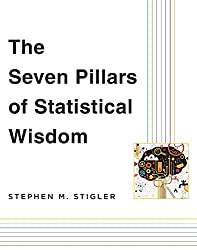Rating: 8.3/10. Generative Deep Learning: Teaching Machines to Paint, Write, Compose, and Play by David Foster Book covering the fundamentals of all the major generative AI models, focusing on image generation such as VAE, GAN, diffusion models, etc. It presents relatively little math and uses Keras code to demonstrate how to train and run each…
Category: Data Science / ML

Deep Learning for Vision Systems by Mohamed Elgendy
Rating: 8.0/10. An introductory textbook on computer vision using deep learning, assuming no prior knowledge of deep learning; thus, the first half of the book covers the basic concepts of neural network architecture and training setups. The second half is more advanced, focusing specifically on computer vision, and covers topics such as vision CNN architectures,…

Deep Reinforcement Learning by Aske Plaat
Rating: 9.0/10. Overall, great textbook about reinforcement learning using deep neural networks, I liked it because it places roughly equal emphasis on theory and code, there are some equations, but the author explains everything more through intuition rather than formal mathematics, making it easy to understand quickly compared to other textbooks. Many of the algorithms…

The Seven Pillars of Statistical Wisdom by Stephen M. Stigler
Rating: 7.7/10. Book about the history of statistics, grouped into seven “pillars” – key ideas that unify modern statistics as a discipline. Each of the seven chapters has catchy titles: Aggregation, Information, Likelihood, Intercomparison, Regression, Design, and Residual. Many key ideas seems obvious in retrospect, but it took a surprisingly long time before anyone thought…

AI Superpowers by Kai-Fu Lee
Rating: 7.9/10. Book Review: AI Superpowers: China, Silicon Valley, and the New World Order by Kai-Fu Lee Book by Taiwanese CEO and venture capitalist working in China, talking about the differences in AI in China and the US, as well as the future of AI in society. Lee starts the book with the AlphaGo matches,…

Machine Learning Design Patterns by Lakshmanan, Robinson, and Munn
Rating: 7.9/10. Book about design patterns specific to machine learning training and productionization. Design patterns are useful since they’re tried-and-tested solutions to reoccurring problems. Even though I’ve used ML in my work for several years, some of these patterns are still new to me. The book is aimed at ML practitioners in the industry and…

Fundamentals of Data Visualization by Claus O. Wilke
Rating: 8.0/10. Part 1: From Data to Visualization All figures should be reproducible from data and code, should not have to make manual adjustments in Illustrator, or you will be dissuaded from updating them, or you may forget how they’re generated. Figures may be “ugly” (aesthetically unpleasing), “bad” (unclear and confusing), or “wrong” (objectively incorrect)….

Designing Voice User Interfaces by Cathy Pearl
Rating: 7.3/10. Voice user interfaces like Siri and Alexa have improved in some ways, but in many other ways are similar to IVR phone systems from the 1970s. This book goes through various things to look out for while designing them. For example: Be as brief as possible and use visual mode to display lots…

The Book of Why by Judea Pearl
Rating: 8.0/10. Book by Judea Pearl, one of the leaders of causal inference who received a Turing award for inventing Bayesian networks. It has some equations, with a level of technicality somewhere between a typical popular science book and a textbook. Causal inference is required because it’s impossible to tell between causation and correlation from…

The Lady Tasting Tea by David Salsburg
Rating: 8.3/10. Tells the story of how statistics emerged as a scientific discipline in the 20th century. The title comes from an apocryphal story by Fisher describing an experiment to see if a lady can taste the difference between two ways of making tea. The book describes the lives and circumstances of the people involved,…
